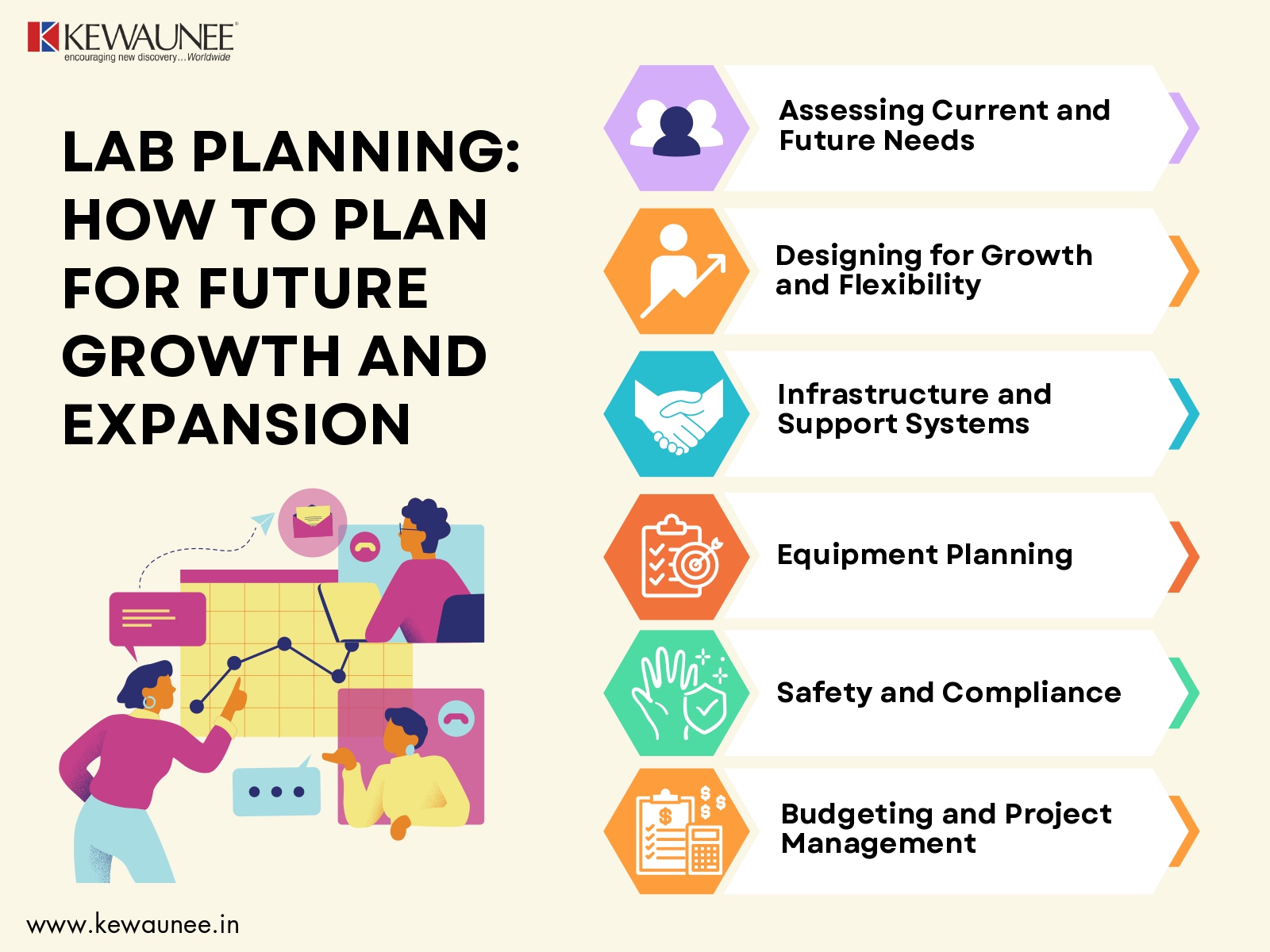Lab Planning: How to plan for Future Growth and Expansion
Lab planning is an essential aspect of laboratory operations that is often overlooked. However, planning for future growth and expansion is vital for ensuring that a lab can keep pace with changing research needs, accommodate new equipment, and maintain compliance with regulatory requirements.
In this blog, we will discuss the importance of lab planning for growth and expansion and provide a brief overview of the topic.
Assessing Current and Future Needs
The first step in lab planning for growth and expansion is to assess current and future research needs. This involves analyzing current lab layout and capacity, determining current research needs, and identifying potential future growth and expansion plans.
Designing a Lab Space for Growth and Flexibility
The design of a lab space plays a critical role in accommodating growth and expansion. A flexible and modular lab design allows for the addition of new equipment and modifications to the lab layout to accommodate changing research needs.
Innovative designs for modular and flexible lab spaces and adaptable lab layouts can be employed to facilitate growth and expansion.
Infrastructure and Support Systems
The infrastructure and support systems of a lab play a crucial role in accommodating growth and expansion.
Electrical and data cabling considerations, HVAC and ventilation systems, and laboratory water and gas supply systems should be carefully planned to ensure that they can accommodate the growth and expansion of the lab.
Equipment Planning
Equipment planning is an essential aspect of lab planning for growth and expansion. Determining the equipment needs for current and future research goals, ensuring adequate space and infrastructure for new equipment, and incorporating equipment with flexible and modular lab design are some of the considerations that need to be made.
Safety and Compliance
Ensuring safety and regulatory compliance is critical to the success of any lab. This is especially true when planning for growth and expansion. Regulatory compliance for lab facilities, implementing safety features and protocols for growth and expansion, and accommodating for future compliance considerations should be carefully planned.
Budgeting and Project Management
Budgeting and project management are essential aspects of lab planning for growth and expansion. Estimating costs for infrastructure, equipment, and construction, and developing a project management plan for lab growth and expansion are crucial to ensure that the lab can accommodate growth and expansion plans.
Conclusion
In conclusion, lab planning for growth and expansion is a crucial aspect of laboratory operations. Assessing current and future needs, designing a lab space for growth and flexibility, planning for infrastructure and support systems, equipment planning, ensuring safety and compliance, budgeting, and project management are all essential considerations for successful lab planning.
The benefits of lab planning for growth and expansion include accommodating changing research needs, keeping pace with technological advancements, and maintaining regulatory compliance. We encourage labs to prioritize lab planning for growth and expansion for successful research outcomes.
Comments are closed.











